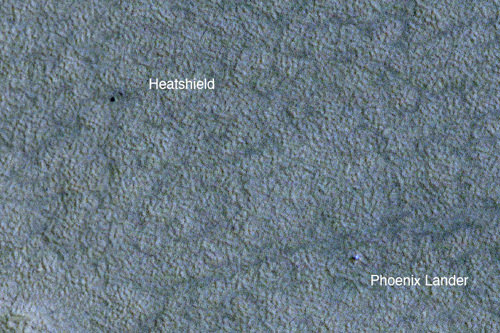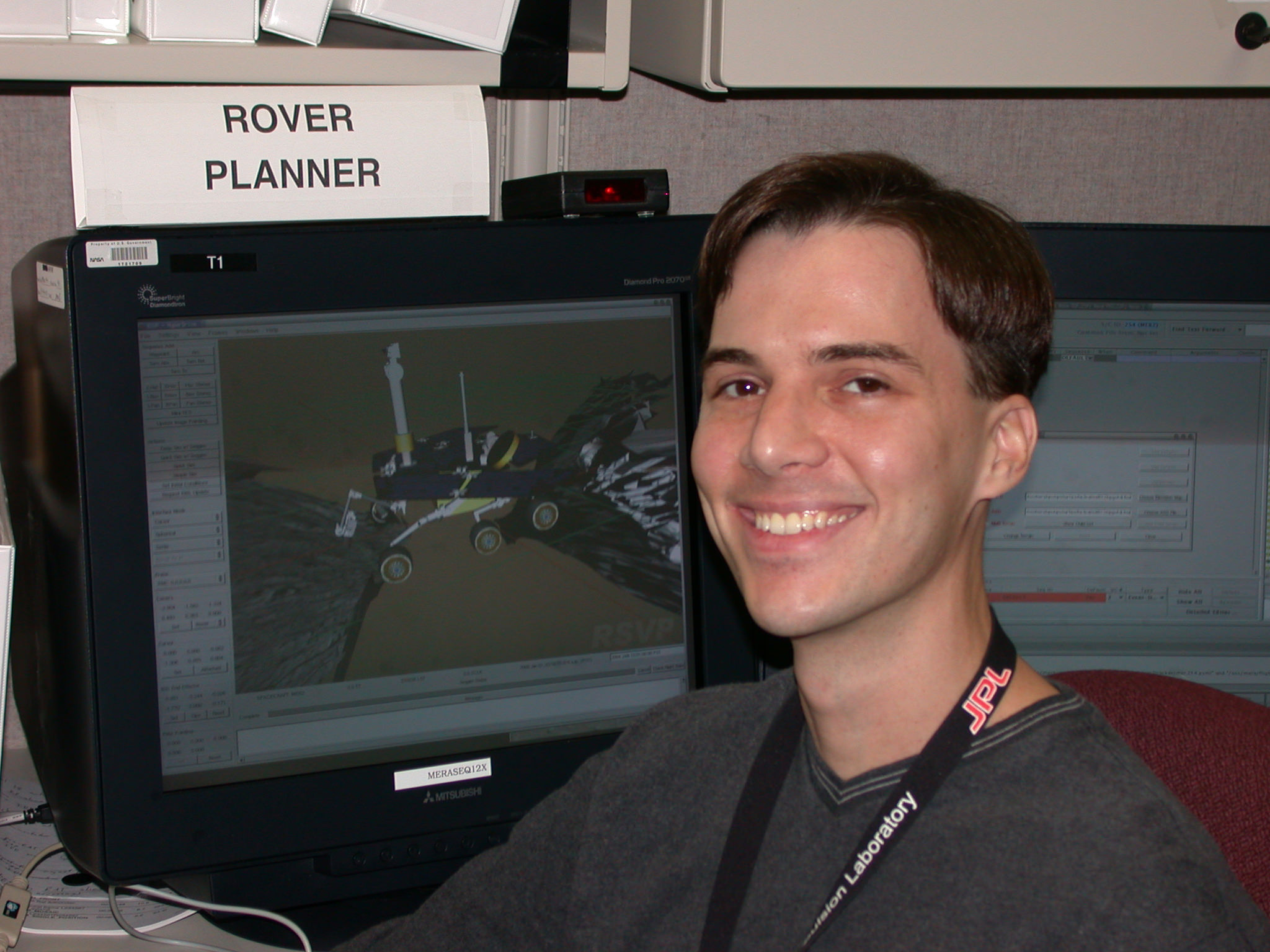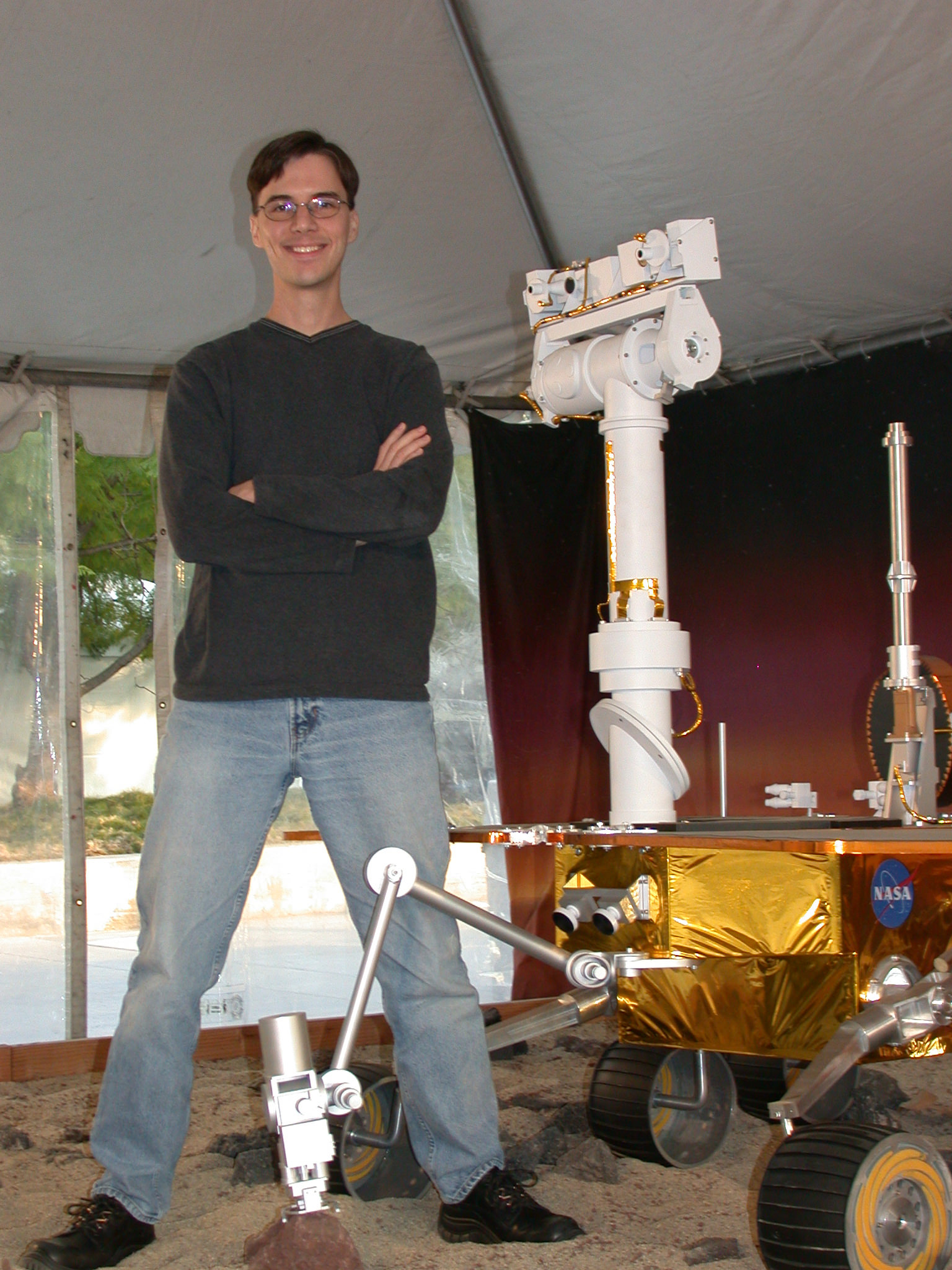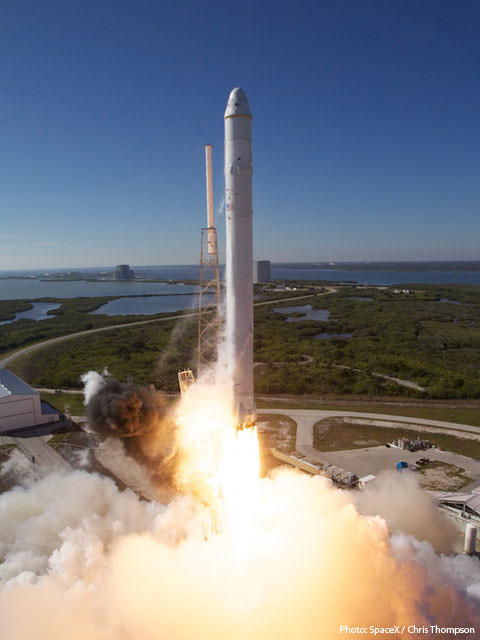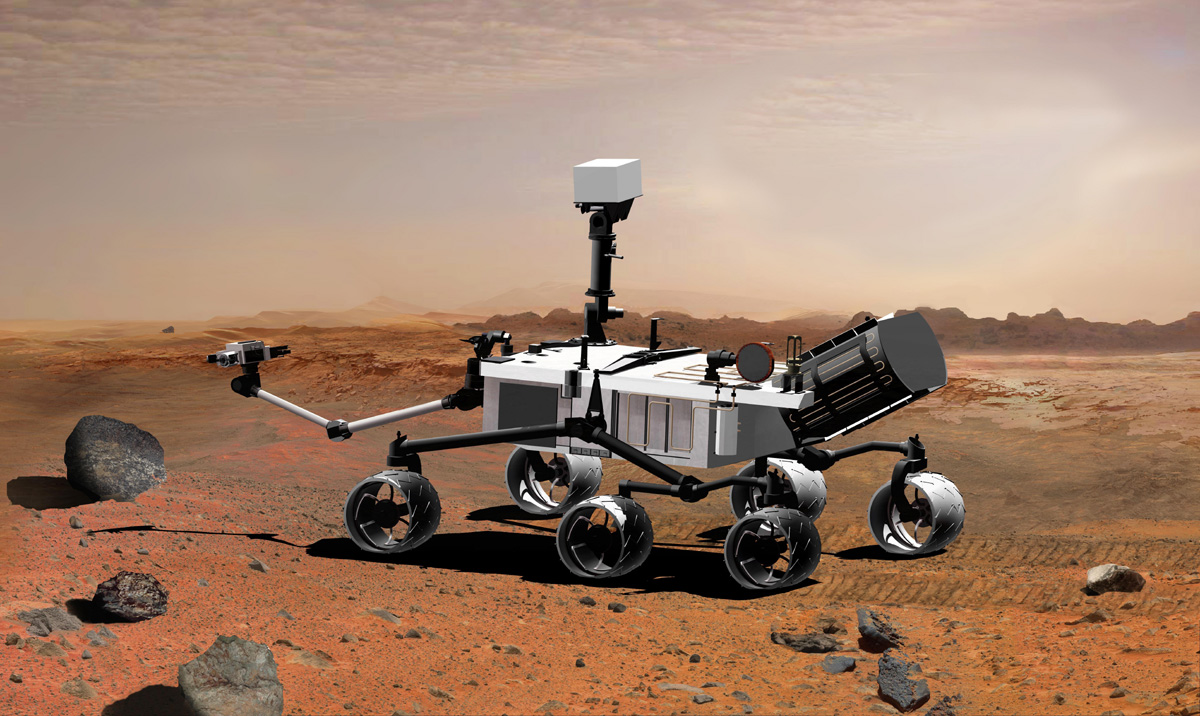[/caption]
The HiRISE Camera on board the Mars Reconnaissance Orbiter is keeping an eye on the Phoenix lander, and took the above image of the landing site on Dec. 21, 2008. Phoenix, its heatshield, parachute and backshell are still visible on the Martian arctic plains, providing evidence that the spacecraft hasn’t been covered with ice as of yet. Via the HiRISE Blog, scientists say the conditions are hazy and dark because northern winter summer is turning to autumn on Mars. They will keep imaging the site as long as there is enough light to see the lander. Compare this image to previous photos of the Phoenix site, below.
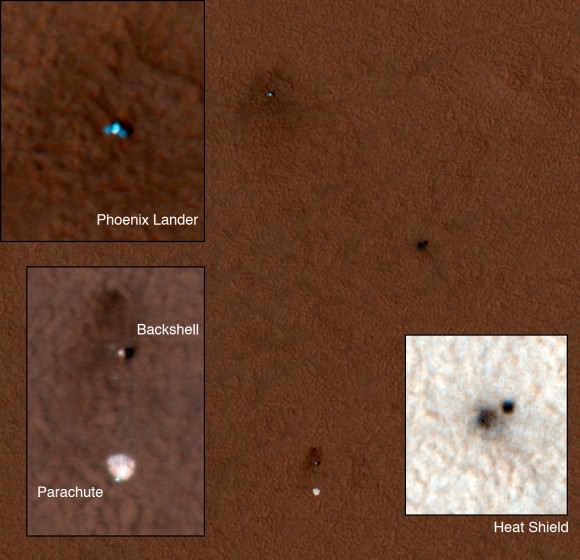
This color image was taken just after Phoenix landed in late May 2008. Insets show the backshell, parachute and heatshield.
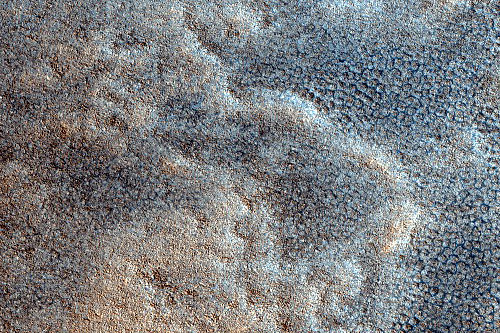
In these images, top one taken in July of 2008, and bottom taken in October 2008, you can compare the lighting conditions between late summer and early fall, and now winter (first image) in the northern arctic regions on Mars.
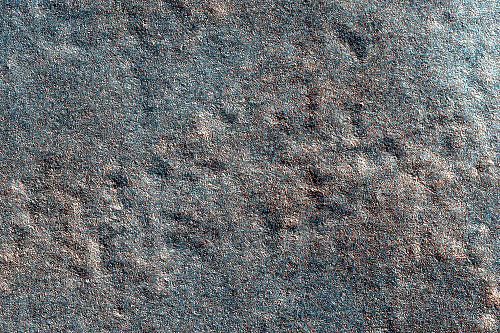
Source: HiRISE Blog, HiRISE site
How to Drive a Mars Rover, Part 3: Five Years on Mars
[/caption]
In preparation of celebrating Spirit and Opportunity’s fifth anniversary on Mars in January, we’ve been talking with rover driver Scott Maxwell, getting updates on the two Mars Exploration Rovers and learning about what it really is like to drive the rovers. Today, Scott will share some of the highlights of the past five years, and his outlook for the future. But first, in the latest updates from Scott via Twitter, he says Spirit tried to back-up off of ‘Home Plate’ but encountered quite a bit of slippage. It looks like she’ll probably end up driving forward and taking the long way around the low plateau to the next target objects, a hill called Von Braun, and a crater-like feature nearby called Goddard. Meanwhile, Opportunity is studying “cobbles” or loose rocks at a region called Santorini, where she has been stationed during solar conjunction. Now that radio transmissions are improving, Oppy will start receiving commands from the rover drivers to hit the road again. The image above is a panoramic image of Santorini, put together by James Canvin at his website, Martian Vistas.
Scott has actually been with the MER mission for longer than just the five years since the rovers landed. He joined the team early on, about three-and-a-half years before the rovers launched. He was part of the development team, helping to write the software used to drive the rovers. Back then, did he ever fathom the rovers would last this long?
How to Drive a Mars Rover, Part 1
How to Drive a Mars Rover, Part 2
“I think back, to that time, and we did all that work where we sat in our cubicles, had meetings and argued with each other about the best way to program the software,” said Scott. “We slaved away working on the mission, never knowing if the mission would succeed or not. We did all that work just for the chance, the hope, that the rovers would be working on Mars for three months. And it was worth it.”
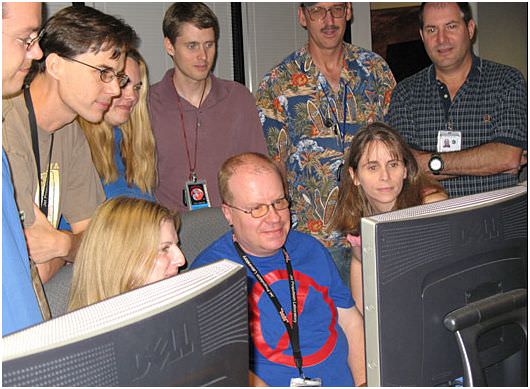
“And then to do all that work and have the rovers on Mars for five years, it’s like you’re playing a slot machine and you put in your quarter and pull the lever, and not only do a few quarters come out, they keep coming and coming and coming, and it fills up your cup, and overflows. That’s what it’s like to work on this mission.”
OK, Scott, now we want to know the highlights for you from the past five years. Certainly there’s at least one or two memorable moments!
“Certainly for me, there are two things I think of,” Scott said. “One is the first time I ever drove the rover. There was the period early on where we lost contact with Spirit. But then we were able to recover her. But that was a month into the mission where we thought it was only going to last three months, and it delayed the time until I got my first chance to drive her.”
“I still remember the day. We planned and planned and rehearsed the drive. I checked over the sequence a million times before sending it. Then I went home and I should have gone to sleep, but I couldn’t. I just laid there in my bed and stared at the ceiling, and couldn’t get past the thought that right then, at that moment, there was a robot on another planet, doing what I had told it to do. It was just an awesome feeling to imagine that, and that feeling has never left me. I still feel like that every time I drive the rover.”
Scott says it’s an incredible feeling to go outside and look up and see Mars in the sky, and on that red dot way out there is an object, placed there by humans, and humans are telling it what to do. “And I’m one of the people doing that. It’s an absolutely amazing feeling. I feel that way all the time.”
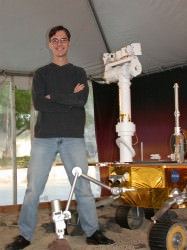
Its obvious Scott has a soft spot in his heart for Spirit, as another memorable aspect of the mission involves her, too. Scott tells the story so well and with such passion, I’ll just let him go:
“The other thing I always think about is that Spirit travels the 300 million miles to Mars, she gets to Mars, drives off the lander, and she’s gone all that way with the hope of finding evidence of past liquid water on Mars,” Scott said. “But instead, when she drives around, there’s nothing: just lava as far as the eye can see. She drives around the area and looks at rocks, and then drives over to Bonnevillle crater, which is her best chance of finding evidence of liquid water, thinking maybe if she goes down far enough into this crater there will be something there, but there’s nothing.”
“But way off in the east, there are a range of hills, the Columbia Hills, and (principal investigator) Steve Squyres says clearly the hills may be too far for us to get to, but maybe we can get some images that can tell us something. But Spirit takes off for those hills anyway, even though they are too far away, and never gives up and gets there; she actually makes it all the way to the bottom of the hills.”
“And then,” Scott continued, “she’s at the bottom of the hill, looking up at them, and it’s now twice as long as she should have survived and she has driven three times as far as she was supposed to be able to drive, and she’s tired and her wheels are sore, now is when the real challenge will begin. Now she won’t just be driving over flat terrain, like she was meant to drive on. She’s going to have to climb the hill, which is taller than the Statue of Liberty, and everyone thinks it’s way too tall for this poor little rover to climb. But she does it anyway.”
“She starts climbing up the hill and there are times when she can’t make any progress, so we have to turn her around and give up some of the altitude she’s won and go back and find another path, but she never gives up and goes all the way to the top of that hill that was just impossibly far away when she started.”
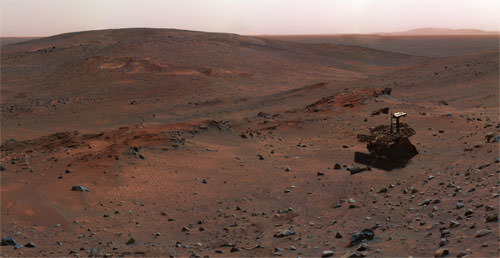
“When we came into work that day and we saw that image of Spirit standing on top of Husband Hill with the beautiful panorama of the world around her –she stood there for a long time and took the images of the area around her — to me, that’s one of the achievements, not just of this mission, but of engineering excellence in our whole civilization, to be able to do that. To be able to go so far and do so many impossible things, that image just says all of that for me. I know what it took to get there and be able to take that image, and I feel the pride of being part of the team that made it happen. It is just an amazing experience.”
As incredible as the MER mission has been, we all know the rovers won’t last forever. Someday – and we don’t know when – the rovers will eventually quit working. It’s hard to think about life without the rovers, but has Scott given any thought to what mission he would like to work on next?
“It’s all downhill from here!” Scott laughed. “But, really there’s a lot of cool and exciting stuff going on at JPL. We’ve got another rover we’re working on, the Mars Science Laboratory, and I’ve been working on that. I’m also involved with ATHLETE, which is a 12-ft. tall six legged robot spider on roller skates that we are going to send to the moon. There’s always so much like that going on here at JPL, it’s just like being an engineer in Disneyland. You come to work and say, ‘What cool stuff can I work on today?’ It’s just awesome, and there’s just no end to it.”
Scott says he has nothing against orbiter missions, but to be honest they’re not top on his list. “I’m not putting them down,” he said, “but orbiters don’t really float my boat. I kind of get into rovers, I kind of relate to them, in a way. But you look at a mission like Cassini and it’s amazing! Cassini is finding liquid water spewing out of Enceladus, and dropping a probe onto Titan and getting the first view beneath the thick clouds that cover that moon! It’s just amazing stuff. So even though orbiters aren’t my thing, I might end up on one of them, too, you never know.”
Scott has definitely shown his worth with the rovers, so, even though the MSL launch has slipped to 2011, the rover fans out there are secretly hoping Scott will have a place on the MSL team when the time comes.
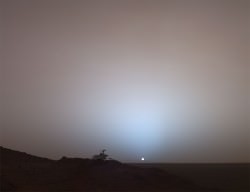
But in the meantime, Spirit and Opportunity, the Energizer Bunnies of Mars exploration keep going and roving, and sending back loads of data and images.
JPL has put out a video to celebrate the rovers’ five years on Mars, where Scott says it best: “It seems like every day is better than the day before. The mission keeps getting better and better the longer it goes.”
Happy birthday Spirit and Opportunity! We’ll take as many years as you can give us!
How to Drive a Mars Rover, Part 2
[/caption]
The Mars Exploration Rovers have been traversing the surface of the Red Planet for almost five years now. But how exactly are the two rovers, Spirit and Opportunity, “driven” from Earth, about 150 million km away? Many of us might have visions of joysticks, similar to what are used for remote control toys, but it’s not like that at all. However, being a “Rover Driver” is one job where having experience with video games and simulation software looks good your resume! Scott Maxwell is one of fourteen rover drivers, or planners as they are also called, who last week gave us an update on Spirit and Opportunity’s status. Today, Scott provides the details of how to drive a Mars rover.
“The way we wished it would work,” said Scott in a phone interview from JPL, “is if we could have a joystick where if we pushed forward on the joystick the rover would go forward, or push back and the rover would stop. But, with lag time delays in the radio signals, you would push forward on the joystick and 10 minutes later the rover would get the signal to go. But on Earth, you won’t know if it worked for another 10 minutes after that because of the time it takes for the signal to get back to you.”
This would create a nightmare in logistics, planning and operations, because the drivers can’t “see” what the rover is doing in real time. So instead, the rover drivers work the Martian nightshift.
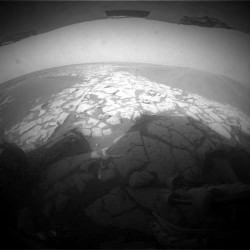
“We take advantage that our solar powered rovers have to shut down for the night,” said Scott. “So as the sun is going down in the Martian sky, the rover is commanded to take pictures of the world around them and send it before they go to sleep. When we get that data back on Earth, we go to work. We take all the images and put them into a simulation. We have a 3-D simulation world — kind of like a video game — on our computers. Then, we have a simulated rover that we put down in that 3-D world and we drive that rover around instead.”
So in that 3-D world, the rover drivers can test every possibility, make all the mistakes (tip the rover, get stuck, drive off a precipice, crash into a big rock) and perfect the driving sequence while the real rovers are dozing securely and peacefully. This certainly has helped with the long life the rovers have led, as in five years the rover drivers have safely and successfully guided the rovers to drive in and out of craters, climb a challenging hill, and put on more mileage than anyone ever thought possible. The biggest driving calamity has been getting stuck in a sand dune, but now the driving team has a few tricks up their sleeves to avoid that (see Part 1).
So then, when the drivers perfect the commands inside the simulation and hone the exact sequence of movements for the rover, they upload those commands and send it to the real rover. Then as the sun is coming up on Mars, the rover wakes up, receives a communications uplink from Earth, processes the commands and it goes to work while the rover drivers go to sleep. “At the end of the rover’s day, it sends us more pictures and data, and we start the cycle all over again,” Scott said.
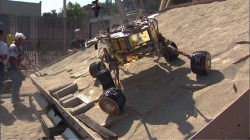
If there’s a particularly difficult situation, such as how much tilt can the rover withstand without tipping over, a test rover can go through the same sequences in a simulated Mars environment out in JPL’s Mars Yard.
Back in 2004 during the “prime mission,” the first three months of the mission (the original length of time the rovers were slated to last) everyone who worked with MER lived on Mars time. Since the two rovers are on opposite sides of the planet, that meant operations going on 24 hours a day. And since a Mars day is 40 minutes longer than Earth’s day, that meant a perpetually shifting sleep/wake cycle, a difficult situation where your body continually feels “jet-lagged.” But now that the mission has been ongoing for such a long time, the planners operate in a more Earth-normal mode and even take some weekends off. But still, a planner’s eight- hour shift can start anywhere from 6:00 a.m. to noon.
So what’s an average drive for the rovers? “It varies widely,” Scott said, “but an average drive is in the neighborhood of a few meters.” Right now Spirit is struggling her way up the side of “Home Plate,” a low plateau, which for a rover is a steep hill. The crumbly soil gives out beneath her wheels as she makes the climb, making it difficult to drive father than a few centimeters in a day. Plus, Spirit is dealing with low power levels from dust-covered solar panels, providing limited energy for any big drives. Just after a recent dust storm, Spirit’s solar panels were producing only 89 watt hours, which is about the energy needed to run a small light bulb for an hour and half.
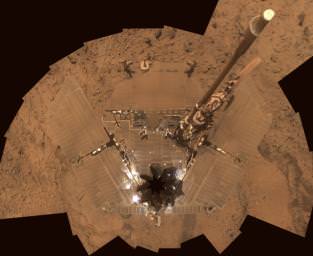
But Opportunity’s power levels are much better, and she recently had drives as long as 216 meters, as she puts the pedal to the metal in an attempt to reach Endeavour Crater, about 12 km away.
Some of the rover drivers work mainly with one rover (Steve Squyres has said it’s easy to get attached to one rover or the other, depending which one you’re working with) but Scott goes back and forth between the two. “That’s in part because I’m a team lead, and part because I’m the kind of person who wants to run around and be part of everything all the time!” he said. When we talked with Scott last week, he was working with Spirit, and thought that this week he will probably do a drive or two with Opportunity.
Currently Spirit’s total odometry is at about 7,530 meters (over 4.6 miles), while Opportunity’s odometer reads almost 14,000 meters (about 9 miles).
JPL has some wonderful videos of the rover’s treks, travails and progress, and you can keep track of the rovers’ progress by checking for regular updates on the MER website.
Tomorrow: What have you been doing the past five years? Scott Maxwell shares what five years of driving the Mars rovers has been like.
How to Drive a Mars Rover, Part 1
How to Drive a Mars Rover, Part 3
How to Drive the Mars Rovers, Part 1: Rover Updates
[/caption]
In January of 2004, NASA’s twin robot geologists, the Mars Exploration Rovers Spirit and Opportunity, landed on the Red Planet. During those nearly five years, the rovers have returned hundreds of thousands of images and enough data to keep scientists busy for decades. But almost nine years ago, Scott Maxwell started working on developing software and techniques for driving the rovers around on Mars surface. Today he’s the Mars Rover Driver Team Lead for MER at JPL, and he says that every day of working on this mission has been incredible. “It’s been an amazing experience,” he said, “and I like to say it’s the best job on two planets.” To celebrate the upcoming fifth anniversary of the rovers on Mars, Universe Today caught up with Scott to get an update on the current status of the two rovers, to find out what the five-year MER mission has been like for a rover driver, and to ask the pressing question, just how do you drive a rover from 150 million kilometers away?
Both rovers have been inactive recently because of solar conjunction, where the sun is between Earth and Mars, which makes communications difficult because the amount of radio noise generated by the Sun. So, when I talked to Scott on Wednesday of this week he was just working on the commands that would be sent to Spirit for the first drive she has taken since several weeks ago. So how is Spirit doing these days?
“Spirit is struggling valiantly to climb up the north face of Home Plate,” Scott said. “As you know, we’ve just come out of solar conjunction, and so we’re picking up where we left off on Spirit’s climb up the face. Her solar array energy levels are not as good as they were before the mini-dust storm we had before the conjunction, so that’s obviously a cause for concern. It’s unfortunate because that means we have less energy for driving. But she’s still alive and that’s a lot better than what we thought she’d be five years into the mission.”
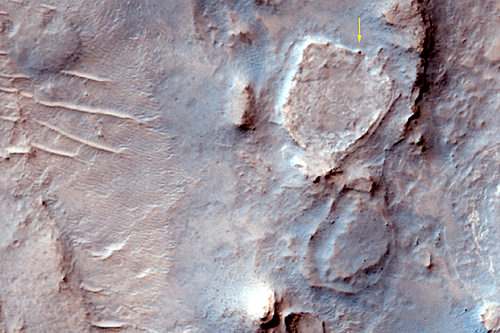
Home Plate is a low plateau about 80 meters (260 feet) in diameter. Spirit spent the Martian winter parked on the north side of the plateau with her solar panels slanted towards the low sun in order to stay alive. But Spirit’s solar arrays are severely dust-covered, decreasing the amount of power available for science activities and driving. But the scientists and engineers haven’t given up on Spirit, and still have big plans for her.
“Our longer term goal is to head south from Home Plate to a pair of features called ‘Goddard’ and ‘Von Braun’,” said Scott. “Von Braun is a hill and Goddard is a crater-like feature next to it, and that’s the next area we’d like to explore. As you know, the area around home plate appears to be a region of past hot-springs or volcanic fumarole activity, the kind of place where life might have formed on Earth, so it makes it a particularly exciting place to explore on Mars, as we try to find out more about what was going on here.”
But ‘Goddard’ and ‘Von Braun’ are on the south side of Home Plate and Spirit is on the north side. The easiest route would be to “climb back up on the top of Home Plate and kind of skate across it where the driving is good” Scott said, but if Spirit isn’t able to make the climb, they will drive down the north slope and go around Home Plate the long way. But that might take more time, and time might be getting limited for Spirit.

So, the shortest way is up and over Home Plate. But Spirit has a bum right front wheel, and is trying to climb up some difficult terrain. “Imagine you’re in the desert, climbing up a sand dune, but every step you take the sand crumbles out from beneath you,” said Scott. “That’s what Spirit is experiencing. So even though we’re commanding the wheels to go several meters, she might only make a few centimeters of progress in a sol (Martian Day).”
But the driving team will keep trying, as ‘Von Braun’ and ‘Goddard’ are of interest to the science team.
Opportunity, on the other hand, is in very different driving conditions. “Right now she’s basically on a parking lot, with only a couple of speed bumps every once in awhile,” Scott said. “Opportunity can drive 100 meters a sol, like the length of a football field every day, without breaking a sweat. We recently had a nearly record-setting drive, with Opportunity where we drove nearly 216 meters in one day,” Scott said proudly. “So that’s our silver medal drive, our second longest drive ever with either of the rovers.” (The longest drive was 220 meters in one day.)
One thing Opportunity does have to watch out for is sand dunes in the region. In 2005, Opportunity became stuck in one of those dunes, and it took the rover driving team over a month to figure out how to maneuver Opportunity out of the sand trap, called Purgatory Dune. In honor of the difficulties and lessons learned from getting stuck, all the potential sand traps in the region are called “Purgatoids.”
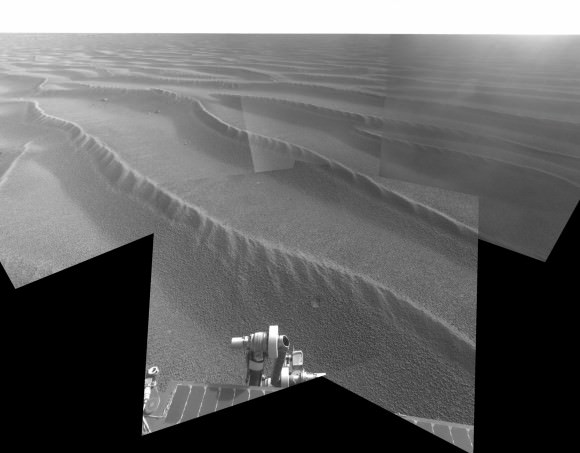
“Opportunity is in a region where Purgatiods are all around her.” Scott said. “But the good news is that we have better data now, than we did when we first encountered these features.” The MER team now has the benefit of the Mars Reconnaissance Orbiter’s HiRISE Camera in orbit around Mars, looking down at — if not watching over – the rovers and their activities. “So we have the data and images from HiRISE, and we think we have identified a way to pick out these Purgatoids from orbit.” Scott said. “So we take the images from MRO, and use them as part of our path planning for Opportunity every day, and also for our longer scale path planning. On top of that we have other measures we have adopted after that first Purgatory incident, where the rover stops every once in awhile and ‘checks’ itself, gauging whether it is actually moving or if it is stuck and the wheels are just spinning. So even if we get into a Purgatoid, we’ll be able to catch it before too long and have the chance to get ourselves out before we dig in too far.”
But so far, with the new technique of being able to identify Purgatoids from orbit, Opportunity hasn’t run into a single one.
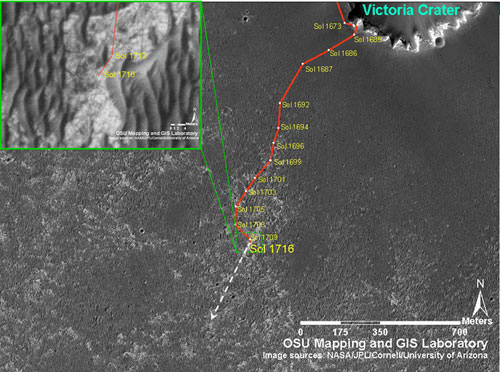
“It makes us happy to put the pedal to the metal and just drive,” Scott said, “It’s a lot of fun.”
Opportunity is “putting the hammer down” to reach a crater about 12 kilometers (7 miles) away called Endeavour. The huge crater is 22 kilometers (13.7 miles) across, and scientists expect to see a much deeper stack of rock layers than Opportunity saw while she was in Victoria Crater the past two years. The 12 km driving distance would match the total distance it has traveled from 2004 to mid-2008. Even at the 100-meter plus pace each sol, the journey could take two years.
But Scott Maxwell and the 13 other rover drivers working on the MER mission are up for the challenge.
Tomorrow: Part 2: Just how do you drive a rover on another planet?
How to Drive a Mars Rover, Part 3
“Clumpiness” of Mars Soil Clue to Climate Cycles
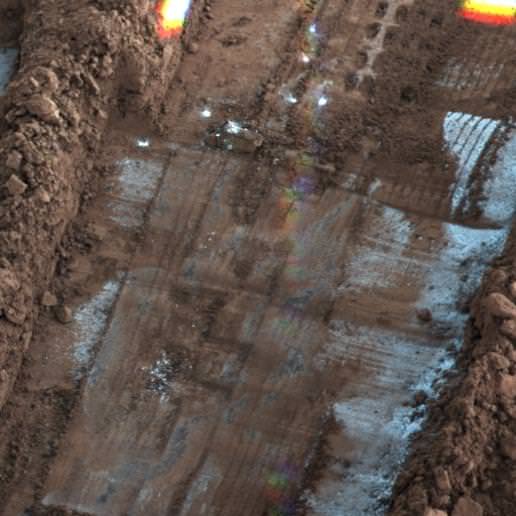
[/caption]
Scientists from the Phoenix Mars Lander mission say the lander uncovered clues that the Martian arctic soil has been warmer and wetter in the past, and right now Mars may just be in a dry cycle. The biggest clue is the “clumpiness” of the soil in the Mars arctic region that Phoenix encountered, making it difficult for the lander to dump samples into the “ovens” that analyzed the chemistry of the soil. While currently the soil is cold and dry, when long-term climate cycles make the site warmer, the soil may get moist enough to modify the chemistry, producing effects that persist through the colder times. “We have snowfall from the clouds and frost at the surface, with ice just a few inches below, and dry soil in between,” said Phoenix Principal Investigator Peter Smith of the University of Arizona , Tucson . “During a warmer climate several million years ago, the ice would have been deeper, but frost on the surface could have melted and wet the soil.”
With no large moon like Earth’s to stabilize it, Mars goes through known periodic cycles when its tilt becomes much greater than Earth’s. During those high-tilt periods, the sun rises higher in the sky above the Martian poles than it does now, and the arctic plain where Phoenix worked experiences warmer summers.
“The ice under the soil around Phoenix is not a sealed-off deposit left from some ancient ocean,” said Ray Arvidson of Washington University in St. Louis , lead scientist for the lander’s robotic arm. “It is in equilibrium with the environment, and the environment changes with the obliquity cycles on scales from hundreds of thousands of years to a few million years. There have probably been dozens of times in the past 10 million years when thin films of water were active in the soil, and probably there will be dozens more times in the next 10 million years.”
Cloddy texture of soil scooped up by Phoenix is one clue to effects of water. The mission’s microscopic examination of the soil shows individual particles characteristic of windblown dust and sand, but clods of the soil hold together more cohesively than expected for unaltered dust and sand. Arvidson said, “It’s not strongly cemented. It would break up in your hand, but the cloddiness tells us that something is taking the windblown material and mildly cementing it.”
That cementing effect could result from water molecules adhering to the surfaces of soil particles. Or it could be from water mobilizing and redepositing salts that Phoenix identified in the soil, such as magnesium perchlorate and calcium carbonate.
The Thermal and Electrical Conductivity Probe on Phoenix detected electrical-property changes consistent with accumulation of water molecules on surfaces of soil grains during daily cycles of water vapor moving through the soil, reported Aaron Zent of NASA Ames Research Center, Moffett Field, Calif., lead scientist for that probe.
“There’s exchange between the atmosphere and the subsurface ice,” Zent said. “A film of water molecules accumulates on the surfaces of mineral particles. It’s not enough right now to transform the chemistry, but the measurements are providing verification that these molecular films are occurring when you would expect them to, and this gives us more confidence in predicting the way they would behave in other parts of the obliquity cycles.”
Phoenix worked on Mars this year from May 25 until November 2.The Phoenix science team will be analyzing data and running comparison experiments for months to come. Today, they reported on some of their progress at a meeting of the American Geophysical Union in San Francisco.
Source: NASA
Time Magazine Top 10 Scientific Discoveries of 2008: Space and Physics Dominate
[/caption]2008 has been an astounding year of scientific discovery. To celebrate this fact, Time Magazine has listed the “Top 10 Scientific Discoveries” where space exploration and physics dominate. Other disciplines are also listed; including zoology, microbiology, technology and biochemistry, but the number 1 slot goes to the most ambitious physics experiment of our time. Can you guess what it is? Also, of all our endeavours in space, can you pick out three that Time Magazine has singled out as being the most important?
As we approach the end of the year, ready to welcome in 2009, it is good to take stock and celebrate the mind-blowing achievements mankind has accomplished. Read on for the top 10 scientific discoveries of 2008…
The best thing about writing for a leading space news blog is that you gain wonderful overview to all our endeavours in astronomy, space flight, physics, politics (yes, space exploration has everything to do with politics), space commercialization and science in general. 2008 has been such a rich year for space exploration; we’ve landed probes on other worlds, studied other worlds orbiting distant stars, peered deep into the quantum world, learnt profound things about our own planet, developed cutting-edge instrumentation and redefined the human existence in the cosmos. We might not have all the answers (in fact, I think we are only just beginning to scratch the surface of our understanding of the Universe), but we have embarked on an enlightening journey on which we hope to build strong foundations for the next year of scientific discovery.
In an effort to assemble some of the most profound scientific endeavours of this year, Time Magazine has somehow narrowed the focus down to just 10 discoveries. Out of the ten, four are space and physics related, so here they are:
6. Brave New Worlds: First direct observations of exoplanets

Considering there have never been any direct observations of exoplanets before November 2008–although we have known about the presence of worlds orbiting other stars for many years via indirect methods–this has been a revolutionary year for exoplanet hunters.
4. China Soars into Space: First taikonaut carries out successful spacewalk

Despite early controversy surrounding recorded spaceship transmissions before the rocket had even launched, and then the sustained efforts by conspiracy theorists to convince the world that the whole thing was staged, mission commander Zhai Zhigang did indeed become the first ever Chinese citizen to carry out a spacewalk. Zhai spent 16 minutes outside of the capsule, attached by an umbilical cable, to triumphantly wave the Chinese flag and retrieve a test sample of solid lubricant attached to the outside of the module. His crew mate Liu Boming was also able to do some spacewalking.
Probably the most incredible thing about the first Chinese spacewalk wasn’t necessarily the spacewalk itself, it was the speed at which China managed to achieve this goal in such a short space of time. The first one-man mission into space was in 2003, the second in 2005, and the third was this year. Getting man into space is no easy task, to build an entire manned program in such a short space of time, from the ground-up, is an outstanding achievement.
2. The North Pole – of Mars: The Phoenix Mars Lander
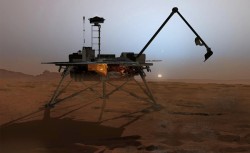
During the few weeks on Mars, Phoenix discovered water, studied atmospheric phenomena, plus it characterized the regolith to find it is more “soil-like” than we gave it credit for. However, Phoenix also discovered a chemical called perchlorate that could be hazardous to life on the Martian surface, but there is a flip-side to that coin; the chemical may provide energy for basic forms of life.
Like all good adventures there were twists and turns in Phoenix’s progress, with the odd conspiracy thrown in for good measure. Even during Phoenix’s sad, slow death, the lander had some surprises in store before it slowly slipped into a Sun-deprived, low energy coma.
To give the highly communicative lander the last word, MarsPhoenix on Twitter has recently announced: “Look who made Time Mag’s Top 10 list for Scientific Discoveries in 2008: http://tinyurl.com/5mwt2l”
1. Large Hadron Collider
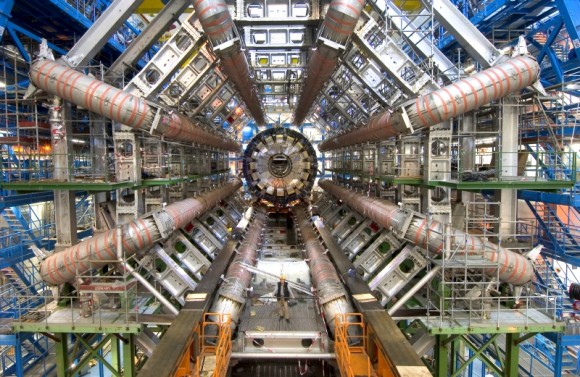
Speaking of “capturing the hearts and minds” of the world, the Large Hadron Collider (LHC) has done just that, but not always in a positive way (although common sense seems to be winning). So, in the #1 spot of Time Magazine’s Top 10 Scientific Discoveries of 2008, the LHC is a clear winner.
In the run-up to the switch-on of the LHC in September, the world’s media focused its attention on the grandest physics experiment ever constructed. The LHC will ultimately probe deep into the world of subatomic particles to help to explain some of the fundamental questions of our Universe. Primarily, the LHC has been designed to hunt for the elusive Higgs boson, but the quest will influence many facets of science. From designing an ultra-fast method of data transmission to unfolding the theoretical microscopic dimensions curled up in space-time, the LHC is a diverse science, with applications we won’t fully appreciate for many years.
Unfortunately, as you may be wondering, the LHC hasn’t actually discovered anything yet, but the high-energy collisions of protons and other, larger subatomic particles, will revolutionize physics. I’d argue that the simple fact the multi-billion euro machine has been built is a discovery of how advanced our technological ability is becoming.
Although the first particles were circulated on that historic day on September 10th, we’ll have to wait for the first particle collisions to occur some time in the summer of 2009. Engineers are currently working hard to repair the estimated £14 million (~$20 million) damage caused by the “quench” that knocked out a number of superconducting electromagnets on September 19th.
For more, check out the Top 10 Scientific Discoveries in Time Magazine, there’s another six that aren’t related to space or physics
HiRISE Wows Again, This Time in 3-D
[/caption]
Grab your 3-D glasses and prepare to be amazed (and addicted!) The team from the remarkable HiRISE Camera on board the Mars Reconnaissance Orbiter has released a collection of 3-D images — 362 of ’em — of Mars surface. The incredible power of this camera can resolve features as small as one meter, or 40 inches, across, and in looking at these 3-D images, it’s almost like being there. Above is one of my favorites from this collection, Arabia Terra. “It’s really remarkable to see Martian rocks and features on the scale of a person in 3-D,” said Alfred McEwen of UA’s Lunar and Planetary Laboratory, HiRISE principal investigator. “The level of detail is just much, much greater than anything previously seen from orbit.”
How was the team able to create so many 3-D images? And how can you get or make a pair of 3-D glasses?
Usually, creating 3-D anaglyphs is a tedious and time-consuming process. But the HiRISE team was able to automate some of the software used in processing the images so two images of a stereo pair could be fed into the software “pipeline” and correlated automatically. So look for even more 3-D images in the future. But 362 should keep most of us busy, for awhile anyway!
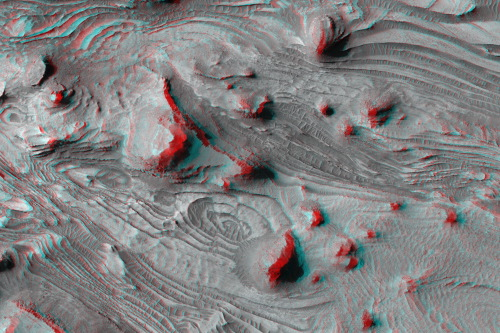
Here, spectacular layers are exposed on the floor of a large canyon in the Valles Marineris system called Candor Chasma which is about 2-and-a-half miles, or 4 kilometers deep. The canyon may once have been filled to its rim by sedimentary layers of sand and dust-sized particles, but these have since eroded, leaving patterns of elongated hills and layered terrain that has been turned and folded in many angles and directions.
If you don’t have a pair of 3-D glasses, here’s a link to a list of several sources of finding some, or you can even make your own. Sometimes, 3-D glasses can be found for free on cereal boxes, or in children’s books or other sources.
Find out how 3-D images are made, and learn how to make your own 3-D images here.

Here is a 3-D version of Becquerel Crater, and the layered terrain of which we wrote about last week, which was formed by cyclical climate change.
See the entire collection of HiRISE 3-D’s here.
Source: U of Arizona
“Stairways” on Mars Lead to Clues on Cyclical, Moderate Climate
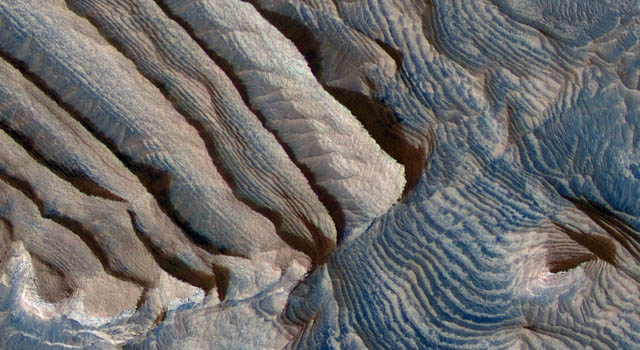
[/caption]
We see evidence on Mars’ surface of a violent past: massive volcanic eruptions, catastrophic floods, and a surface scarred with craters. But new images of rock formations on Mars resembling stairs suggest Mars at one time had a regular pattern of predictable and even moderate climate cycles persisting for millions of years. Three-dimensional images from the HiRISE camera on the Mars Reconnaissance Orbiter show patterns in thick stacks of sedimentary rock layers, formed by a cyclical climate that is likely tied to the wobble of Mars on its axis.
Combining several images of the rock formations from different perspectives, scientists were able to produce three dimensional images, as well as a dramatic flyby movie of the layered sediments. Based on a pattern of layers within layers found at an area called Becquerel crater, the scientists propose that each layer was formed over a period of about 100,000 years and that these layers were produced by cyclical climate changes. The outcrops have been eroded into mounds on the floors of the craters, with many of the layered deposits showing a stair-stepped shape. Each layer has exactly the same thickness.

Every 10 of the “staircase” layers are bundled into a larger unit, which the team, led by Kevin Lewis of the California Institute of Technology, calculates was laid down over a million-year period, and Becquerel contains 10 of these bundles. One million years is the same duration as the periodic variations in Mars’ tilt, suggesting that climate variations induced by the tilt produced the layering. Each bundle, then, represents climate processes as the planet tilted. This tilt periodically cooled the equatorial region and warmed the poles as they received more sunlight.
“Due to the scale of the layers, small variations in Mars’s orbit are the best candidate for the implied climate changes,” said Kevin Lewis of the California Institute of Technology, who led the study. “These are the very same changes that have been shown to set the pacing of ice ages on the Earth and can also lead to cyclic layering of sediments.”
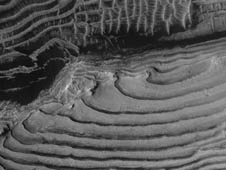
The tilt of Earth on its axis varies between 22.1 and 24.5 degrees over a 41,000-year period. The tilt itself is responsible for seasonal variation in climate, because the portion of the Earth that is tipped toward the sun–and that receives more sunlight hours during a day–gradually changes throughout the year. During phases of lower obliquity, polar regions are less subject to seasonal variations, leading to periods of glaciation.
Mars’s tilt varies by tens of degrees over a 100,000-year cycle, producing even more dramatic variation. When the obliquity is low, the poles are the coldest places on the planet, while the sun is located near the equator all the time. This could cause volatiles in the atmosphere, like water and carbon dioxide, to migrate poleward, where they’d be locked up as ice.
“It’s easy to be fooled without knowing the topography and measuring the layers in three dimensions,” said Alfred McEwen of the University of Arizona, Tucson, principal investigator for the camera and a co-author of the paper. “With the stereo information, it is clear there’s a repeating pattern to these layers.”
Sources: JPL, Caltech
US Space Missions
The United States has launched dozens of missions into space. Most people can only recall two with ease: Apollo 11 because it landed on the moon, though few can tell you its Apollo 11, just that Neil Armstrong landed on the Moon and the shuttle Challenger because it exploded so dramatically.
Over the course of 6 decades NASA, and its predecessor NACA, has launched 30 missions within projects Mercury and Gemini, not to mention the countless flights made by the five space shuttles. Every mission flown had at least on ‘first’: first in low Earth orbit, first in orbit, first to orbit the Moon, first American in space, and so on. In order to carefully list the accomplishments of each mission would take several hundred pages, so here on Universe Today we have compiled a list of links to articles about each mission. To shorten the list even further, we cut out some of the missions that were scrubbed or did not launch.
You will also find some links to unmanned flights like the Voyager project, Cassini, and the Mars rovers.
Be sure to follow as many of the links below as possible. You will discover many new and interesting facts about the American space program.
Uncrewed Space Flight
- Cassini-Huygens
- Dawn Mission
- Deep Impact Space Mission
- Explorer Program
- Galileo Spacecraft
- Helios probes
- Hubble Space Telescope
- Juno Spacecraft
- Lunar Orbiter Program
- Lunar Reconnaissance Orbiter (LRO)
- Magellan Probe
- Mariner Program
- Mars Exploration Rover (MER)
- Mars Pathfinder
- Mars Global Surveyor
- Mars Reconnaissance Orbiter (MRO)
- Mars Science Laboratory
- MESSENGER spacecraft
- New Horizons spacecraft
- Pheonix Lander
- Pioneer Program
- Ranger Program
- Surveyor Program
- Viking Program
- Voyager Program
Crewed Spaceflight
Mars Science Laboratory Mission Delayed Two Years
[/caption]
NASA’s Mars Science Laboratory has been delayed for two years and will now launch in the fall of 2011. The decision to delay is based on various technical problems the MSL team has encountered and having enough time to work through the problems, as well as provide adequate time for testing all the systems on the car-sized rover. The main problems are the actuators, the gear boxes for all the moving parts. Mars program manager Doug McCuistion said the team is actually only a few months behind schedule, but in going to Mars, that doesn’t matter since a launch window to the Red Planet only comes once every 26 months. “We know these actuator motors must work on Mars and we’ve got anomalies on some of them we don’t understand,” said McCuistion. “It’s the right thing to delay the mission to take the appropriate time to understand the technical issues and test everything thoroughly.”
“Failure is not an option for this mission,” said Ed Weiler, NASA’s associate administrator for science.
The MSL mission will send a next-generation rover with unprecedented research tools to study the early environmental history of Mar, with the fundamental purpose to explore if the conditions for microbial life on Mars ever existed, or if they exist now.
The slip to 2011 will cost $400 million, making the total cost the mission about 2.2-2.3 billion in life cycle costs.
Weiler said there will some “pain” in planetary science and other Mars missions, but there will be paybacks, and no cancelations of any missions or programs are expected. There could be subsequent delays in other missions, however.
“There’s nobody who would like to launch in 2009 more than this team,” said JPL Director Charles Elachi. “These are the same people who put the face of NASA on the front page of newspapers the past few years with our other Mars missions. Unfortunately despite full support by NASA headquarters and the contractors, we just came a little short on time. The plan is to understand these technical issues, look for solution and do a very comprehensive test program. You can’t rely on luck to be successful on Mars.”
The vast majority of the hardware for the rover has been completed, but not everything is working well, particularly the actuators. NASA officials at today’s press conference all said they can’t send MSL to Mars without knowing everything they can about the issues with the actuators.
“The actuators are basically motors in a gear box,” said McCuistion. “All our landers have robotic actuators, and they enable the rover to do what they do: to drive and stop, they run the elbow and wrist join for the robotic arm and drills in sample handling devices. That’s why they are absolutely crucial to these missions. If the actuators can’t move, we essentially have junk on the surface of Mars.”
There are 31 different actuators on MSL, and 60 flight actuators and 45 engineering actuators are being built. Some of the problems have come from the manufacturing side with workmanship, and the most recent issue is drag torque issues within the devices. “The criticality and the number of these actuators is key,” said Elachi. “These actuators are much more massive than for MER mission since the MSL rover is about 8 times bigger, and they are very sophisticated.”
When asked if NASA had considered canceling the MSL mission, Griffin said absolutely not. “Before canceling I’d have to believe the project is going badly in a technical sense, but it’s not. When you’re doing things that have never been done before, you’re likely to encounter unforeseen difficulties. But just having difficulties is no cause to cancel. We had problems with Hubble, and we had problems with COBE, but I don’t think today anyone regrets having Nobel prize winning science from these missions. Unless you’re interested in building cookie cutter copies of previous spacecraft, and nobody is interested in doing that, you’ll encounter problems with hardware that’s never been built before.”
Source: NASA TV

